The content of the article
Imagine the situation. Autumn. Around is the dull gray of dirty yellow shades. You are walking. And suddenly, the eyes grab a large colored spot. The legs themselves and carry you, uncontrollably, in an attempt to discern that it is there so bright in the flowerbed? Violet, emerald, pink, white, juicy, magnificent ... Where in the midst of gloom and wilting is such a fabulous delight? What it is?
The answer is simple. Such emotions can cause only one plant - ornamental cabbage. It is she who stands out as a bright spot when other colors are no longer in sight.
Naturally, you already wanted yourself such a charm. Today we understand how to grow decorative cabbage.
Grade selection
Today, selection represents a chic selection of varieties. Which plant to plant on your site depends on your personal preferences. Well, a little from the goals that you pursue. Because decorative cabbage of low-growing varieties can gently knock out the main plantings. And tall varieties are recommended for individual cultivation, as solitary plants.
Before buying a treasured bag, decide why you need such beauty. And be sure to read the information on the packaging. After all, some types of decorative cabbage reach a height of up to 1.5 meters. Keep this in mind when planning planting on a flower bed.
Soil preparation
Despite the fact that the cabbage is decorative, the principles of growing it are not very different from caring for other types of cabbage. The first step is to sow the seeds for seedlings. But you can’t just spill any soil and scatter seeds. As a rule, such manipulations end in a complete fiasco. First you need to properly prepare the soil. After all, even the purchased one is sometimes infected with spores of the black leg. And this nasty thing respects the very young sprouts of any plants.
Therefore, you must choose one of the options:
- Deep freezing during the day. You can do this in advance in the winter on the street, or you can put the earth into packages and hold it in a simple freezer if you do not have time in the cold season.
- Warming up in the oven. For 2 kg of soil, only 30 minutes at a temperature of 105-110 ° C will be enough.
- Processing with hot (+ 80-85 ° С) strong solution of potassium permanganate maroon color.
It should be remembered that after manganese disinfection, it is impossible to use the soil for its intended purpose for at least 12 hours.
Better yet, do all the “medical” procedures 15 days before sowing, and shed the soil with a solution of phytosporin. This will allow beneficial microorganisms to populate sterile soil faster than pathogenic bacteria.
Tip. Disinfect any land, both garden and shop.
Seeding for seedlings
There are no exact recommendations on when to plant decorative cabbage. In different regions, these data are very different. The average value is from March 15 to April 30 in pots, and from May 1 to June 15 in open ground. Later, planting does not make sense, because decorative cabbage does not have time to grow. And earlier dates will cause the sprouts to stretch out from a lack of light.
Important! Do not sow ornamental cabbage in bulk. She needs room for growth, even at the initial stage of development. And she also does not really like the pick. The best option would be to plant each seed separately in a cup with soil or even a peat tablet.
The sowing process itself is as follows:
- About 12 cm of prepared soil is poured into a cup.
- Top with 1 or 2 seeds.
- Sprinkle with a layer of earth 1.5-1.8 cm.
- Lightly moisten with a spray bottle.
- Close the cup with polyethylene or glass.
- They put in a warm dark place.
Everything, now it remains to not miss the moment of emergence of seedlings. This happens very quickly, literally on day 3. After that, you can remove the shelter, and transfer the containers to the light. At the same time, the ambient temperature should not be higher than + 19 ° C, because in the heat the sprouts of decorative cabbage feel very bad.
Tip. If you are not sure about the quality of the seeds or their germination, then their number by 1 capacity can be increased to 3-4 pieces. Then just gently scissor the weak shoots, leaving the strongest. Just do not pull out, otherwise damage the root system.
Seedling Care
Caring for the young plants of decorative cabbage before planting in open ground is not difficult. Regular watering as the soil dries and periodically airing - that’s all that seedlings need.
The only deviation from the standard set is top dressing with a weak solution of any mineral fertilizer in phase 3 of real leaves. Naturally, this is done not on dry soil, but on the day after the next watering, so as not to burn young roots.
Tip. Do not keep seedlings in direct sunlight. In recent years, April of the middle band raises the thermometer to + 30 ° C. This is fraught for decorative cabbage not just burns, but a painful death from overheating.
Landing
Seedlings are planted in a permanent place when 5-6 true leaves appear. Do not be afraid if the weather allows you to wish for the best. Even the smallest sprouts calmly endure short-term frosts up to - 4 ° C. And grown ups and adults feel comfortable right down to - 12 ° C. Therefore, do not let youth outgrow, but calmly plant in open ground.
Do I need to prepare a bed in advance for decorative cabbage? Need. But just do not add too much manure or organic matter. This contributes to the rapid build-up of the mass, which is too loose and watery. By the way, the color of the future outlet with an excess of nitrogen will be more green.
Bright shades of leaves are obtained when the soil is correctly seasoned with any complex mineral fertilizer with a high content of phosphorus and potassium. By the way, do not forget about molybdenum and boron. These trace elements are vital for all types of cabbage.
Here we will not give the exact dosage in grams, as some sources do. At a distance without harm, this is impossible. Just advise you to carefully read the manufacturer’s recommendations on the packaging, and then apply them on your site, thinking with your head and not with greed.
Ornamental Cabbage Care
In principle, it is not very different from caring for the usual species of cruciferous. Abundant watering, sprinkling in the heat, weeding, loosening. All this is a classic set for all varieties of cabbage. By the way, pests of ordinary cabbage also adore decorative. Control measures are used both folk and chemical.
Just do not be afraid to use insecticides. You are not going to use decorative cabbage for food. No, some sources claim that this is quite possible and will not bring harm to the digestive tract. But it’s not clear why to cut such beauty into a salad or cabbage soup when there are many types of cabbage?
Feel free to handle the planting with special tools. Proponents of organic farming can turn to folk wisdom. There are many recipes for getting rid of pests without the use of chemicals.
Tip. Try bioinsecticides. They are absolutely safe for animals, people and plants, but they cope with a wide range of enemies of the garden.This procedure is not difficult, and the first wave of pests begins to die within 4-6 hours after processing the plantings. Only store the drug correctly and use it strictly according to the instructions, otherwise it simply will not bring the proper result.
Diseases affect ornamental cabbage are the same as ordinary. This is mucous bacteriosis, and keel, and root rot. The list can be continued for a long time, only this is pointless. Enumeration will not help avoid infection. It is better to spray the plantings with any fungicide even before the onset of the disease. After all, any infection is easier to prevent than to treat later.
By the way, crop rotation is very helpful. Ornamental cabbage can not be planted on those beds where cruciferous crops used to grow. But many decorate her not only flower beds, but also the garden.
Tip. If you are an ardent opponent of chemicals in your area, then you can use fungicides of biological origin. They are a concentrate of beneficial bacteria and create a good microclimate in the soil and on the surface of plants, which does not like spores of fungi and pathogenic microorganisms.
Some helpful suggestions
Every year, buying seeds of decorative cabbage is quite expensive. What to do? Collect them yourself. To do this, in the first year of growth, you can freely admire the fabulous sockets. And with the onset of sustained cold weather, the plant is transplanted into a large container with a lump of earth. In winter, it is kept in a humid, cool room. Periodically watered, fertilize and remove dried leaves. In spring, as soon as the snow falls, you can plant decorative cabbage back into the ground. A flower arrow will soon appear, and then seed boxes. They will need to be carefully cut before opening, and dried. Then it remains only to collect the ripened seeds.
By the way, for better pollination it is recommended to plant several plants of different varieties not far from each other. To attract bees and bumblebees, low concentration sugar syrup is used. They are simply sprayed with flowering ornamental cabbage.
Do not rush to pull out plants in the fall with the advent of frost. They perfectly tolerate a temporary decrease in temperature, and from the cold they only become brighter. In warmth, ornamental cabbage has a pale shade of leaves, leaving in the green. The same applies to strong shading. Choose a place to land where the sun's rays fall at least half a day.
Who doesn’t want to watch the lush riot of decorative cabbage for longer? In this regard, there are recommendations in the fall to transplant several plants into large flowerpots and continue to grow them in an apartment.
This is quite feasible if you can provide plants with constantly high humidity and competent care. It will be difficult to create a climate in the room, close to the usual street. This is only possible if you have a conservatory, a greenhouse or, at worst, an insulated balcony, veranda. Here you can try to grow your decorative cabbage at home. Then she will delight you with her variegated chic leaves all fall and winter.
How to grow ornamental cabbage? Now you know that this is not at all difficult. Compliance with recommendations and competent simple care are the components of success. And in the fall, other people will carry their own feet to your garden, see where this bright spot came from.
Video: decorative cabbage

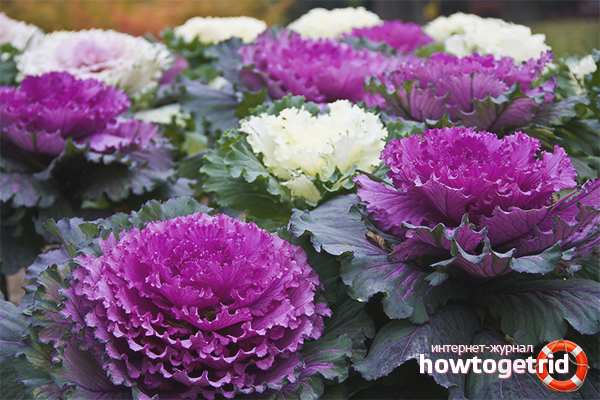
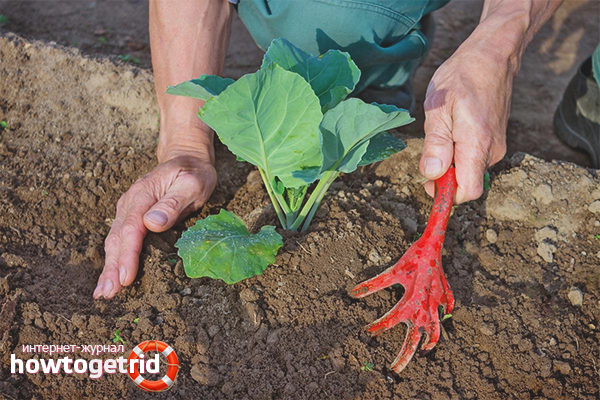
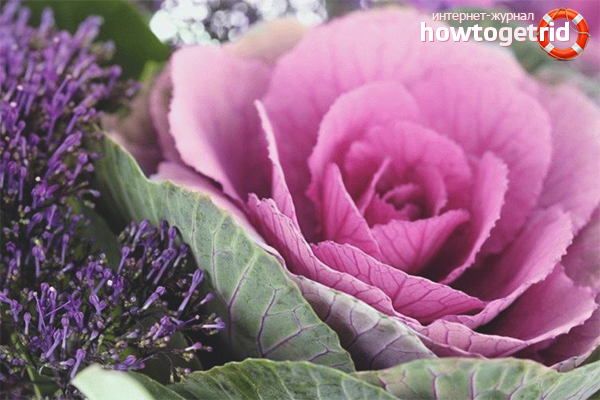
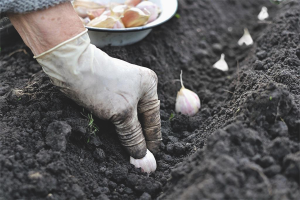

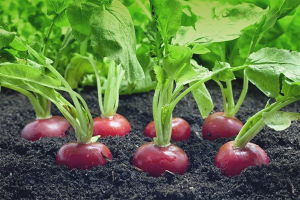
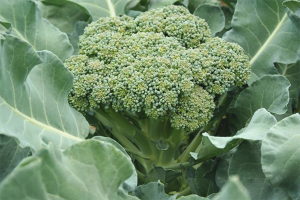
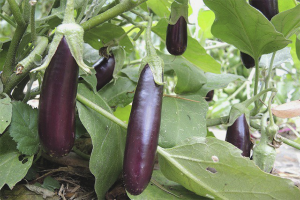


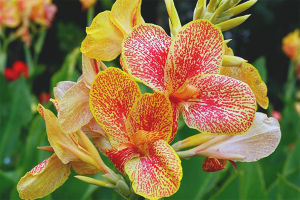
Submit